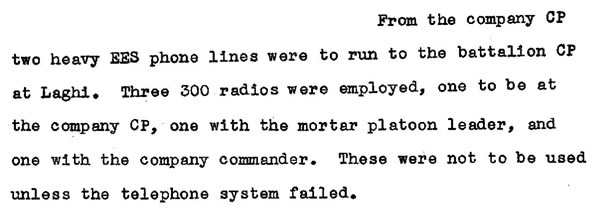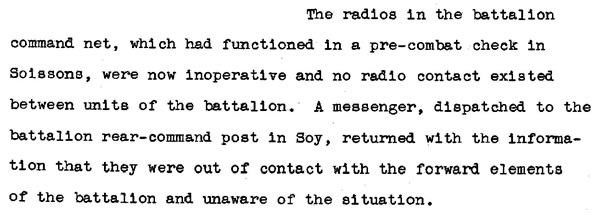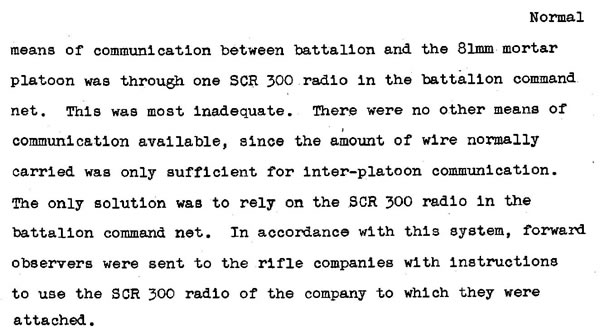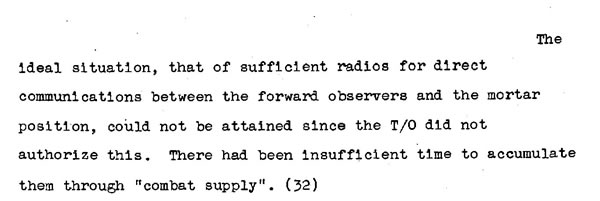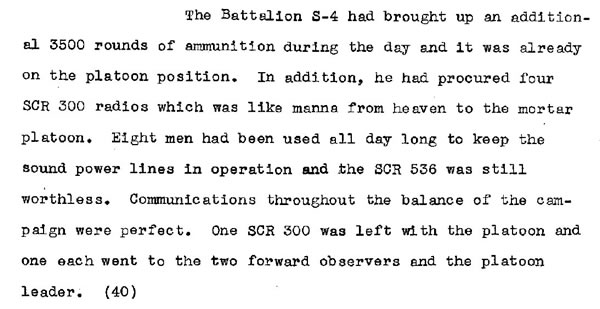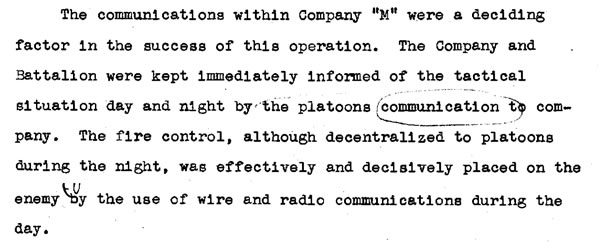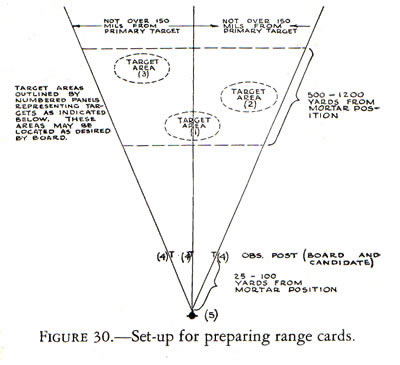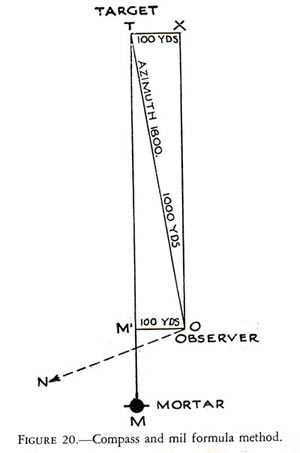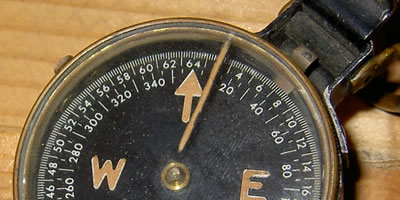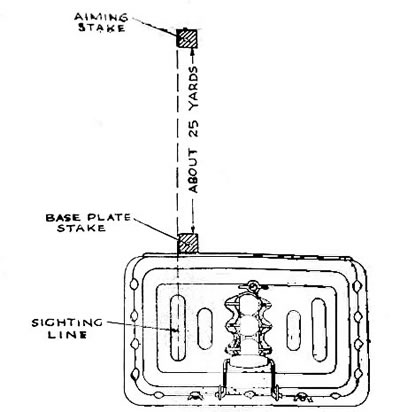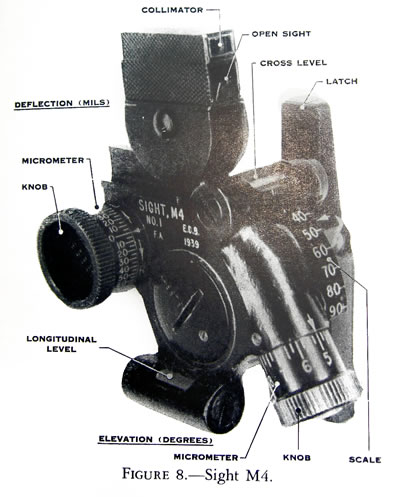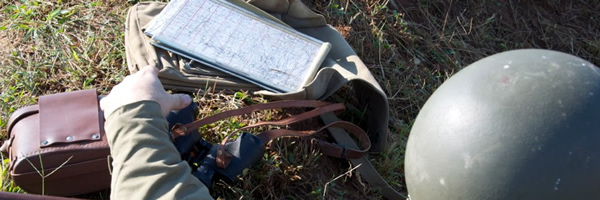Tableau Number 1
The 81mm Mortar Squad
Date: January 2013
Author: Chris Guska - 90th IDPG
Communications
The fundamental question of who did the Mortar Platoon work for - and how did they get their orders requires some discussion.
The Weapons Company and its Mortar Platoon was commonly used as a Battalion asset.
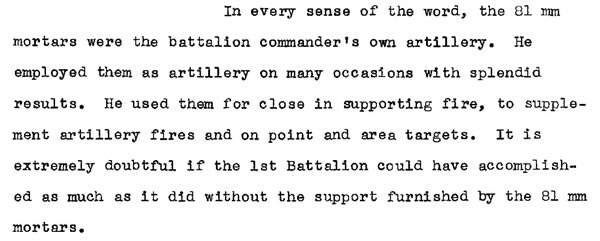
Quote from Fawcett, Lawrence W. CPT
Quote from Hankel, Halland W. CPTThe quote from Captain Hankel illustrates a common theme, with the Machine Gun Platoons being allocated for direct support of the rifle companies on the assault and the Mortar Platoon being used as the Battalion Commander's supporting fire.
Depending on the action being planned, the Mortar sections could be assigned to be in support / work with specific infantry elements, or massed for fire for maximum effect.
Quote from Danley, Earl E. CPT
Quote from Short, James H. MAJForward observers were drawn from the Mortar Platoon and sent forward to the Rifle Companies that they were supporting. Commonly, the Forward Observers were the Section Sergeants, while occasionally the Platoon Sergeant and Lieutenant were utilized.
Quote from Fawcett, Lawrence W. CPT
Quote from Townsend, James M. CPTThe Forward Observers would relay communications back to the Mortar Platoon command and control element, or Heavy Weapons Company HQ. Heavy Weapons HQ maintained contact with Battalion HQ.
The Weapons Company and Mortar Platoon operated on the Battalion Operations / Tactical communications network.
Based on the Regimental TO&E, there were 6 SCR300's allocated to the Infantry Battalion. This allowed 1 SCR300 per Company, with 2 at Battalion HQ. Additionally, Regimental HQ Company had 12 SCR300 Radios in pool to be used as desired.
The primary method of communications was field phones, with the radios being a secondary and runners as a fallback when technology failed.
Quote from Danley, Earl E. CPT
Quote from Townsend, James M. CPTField Phones required constant attention to keep the lines policed and operational. The SCR 300 radio quickly became a preferred method, when more units could be acquired. Weapons Companies had a single SCR 300's allocated from Battalion, thus in many cases being dependant upon the additional SCR 300's allocated in Regimental TO&E.
Quote from Townsend, James M. CPT
Quote from Townsend, James M. CPTThe Weapons Company SCR536 (BC611) radios on hand by TO&E, were marginal at best and operated on a different frequency not allowing cross talk with the SCR300's. This lack of reliability and interoperability led to Weapons Companies acquiring the superior SCR300 units above TO&E through "Combat Supply" from the Regimental pool.
Quote from Fawcett, Lawrence W. CPT
Quote from Hankel, Halland W. CPT
Quote from Fawcett, Lawrence W. CPT
Effective and reliable communications were essential to successful use of the Weapons Company. In all of the monologues I reviewed in writing this article, this point was stressed.
Quote from Hankel, Halland W. CPTWhen combined with a centralized command structure to prioritize fire and "do the math", the Mortar Platoon could be decisive.
Quote from Fawcett, Lawrence W. CPT
Quote from Hankel, Halland W. CPT
Fire Control / Orders
Now that context has been established as to who the Weapons Platoons worked with and generally how they got their orders, here are some basic concepts and terms of low level fire orders.
Planned Fire
Targets are pre-determined with range estimated and deflection calculated from a base point.
Primary and secondary targets are identified for each mortar or section, with the targets being assigned a number or identifier.
The Section or Platoon leader completes these tasks as time allows so targets can be rapidly engaged for coordinated attack or defense.
A range card is prepared with the Primary target being the initial orientation (zero) for the mortar. The secondary targets are listed with details on deflection, elevation and increment charges for the crews. Further remarks are listed with the number of turns required of the elevation and traverse wheels for rapid communication. If a fire pattern is desired, searching or traversing fire is specified.
Direct Alignment Method
This method is preferable when both the mortar and target can be seen from a point very near the mortar position (within about 50 yards)...
.. The observer moves forward to a position from which he can see both the mortar position and the target. He places himself on the line mortar-target and drives an aiming stake on this line...
From this initial stake, he uses something straight to sight the mortar and target with, then comes back to the mortar to set an aiming stake along this line he has created.Azimuth Method
This method is used when the observer, at his observation post, cannot see both the mortar position and the target...
...The observer at the observation post proceeds as follows:
(a) Reads the azimuth of the line observer-target.
(b) Estimates the distance observer-target and at the same time estimates the shortest distance from his position to the line mortar-target.
(c) Divides the distance to the line mortar-target, by 1/1000 the line observer-target (range to the target from his position)
(d) Correct the azimuth reading by adding or subtracting the quotient of the above division to determine the azimuth on which the mortar should be laid. If the mortar is on the left of the observer, he adds the quotient to the azimuth of the line observer-target; if the mortar is on his right, he subtracts.Bracketing
An initial round is dropped against the target. The observer determines if the burst is short or over. Another round is dropped 100 yards further if the first was short, and 100 shorter for over. A third round is used to bisect the distance if the 2nd round is not on target. If still not on target, any further rounds should be close enough for effect based on dispersion and blast radius.
A fire order would follow a standard FIRE FOR ADJUSTMENT...
Creeping
When working with troops engaged close to the enemy, rounds are dropped deliberately over and incrementally walked back onto target.
Minimum safety range as prescribed by the manual is 200 yards in front of friendly forces.
Combat experience led to a recommendation that a 100 yard standoff can be safely executed.
Quote from Fawcett, Lawrence W. CPTA fire order would follow a standard FIRE FOR ADJUSTMENT...
Traversing Fire
The rounds to be fired are distributed laterally across a target not over 100 yards wide.
A fire order would be TRAVERSE LEFT 3 TURNS, 3 ROUNDS.
Searching Fire
Rounds to be fired are distributed in depth (range) typically not over 100 yards.
A fire order would be SEARCH 1100-1200, 3 ROUNDS.
Mils
The concept of Mils is inseparable from planning, laying, firing and observing for the mortar. This is a core concept.
Imagine a circle with 360 pie pieces... now think about how large those pie pieces would be at a distance (radius) of 3000 yards. Each pie piece would be 52 yards wide - not nearly accurate enough to put fire onto a pillbox or machine gun emplacement. This is where Mils come in.
Mils are a more precise measure of a circle.
From FM 23-90, Basic Field Manual, 81-MM Mortar M1, 1943
A mil may be defined as the angle measured by an arc the length of which is 1/1000 of its radius. Thus, if the distance from the mortar to O to A is 1000 units of any designated measure (shown as yards in the sketch below)
And the distance from A to B measured along the arc AB, drawn with O as the center, is 1 unit (shown as 1 yard in the sketch above), then the angle AOB is 1 mil.
Thus - 1 mil at 500 yards = 1/2 yard wide, 1 mil at 2000 yards = 2 yards wide...
Doing some math... Radius (distance to target) of 1000 yards x 2π (3.1415) = 6283. This number is the circumference (distance around the circle).
6283 is an ugly number, so the Army uses 6400 to make the math easier and aiming a little more precise.
That 64 on the compass make a bit more sense now?
Laying the Mortar
1. The direction of the target is determined either by direct line of sight, or via an azimuth or map coordinate relayed via radio, field phone, or runner.
2. The baseplate is laid. This is the first piece of the mortar to be emplaced, and is set along the direction of fire. This is perpendicular to the target.
3. The “Base” and "Zero" aiming stake are placed, as indicated below.
4. The bipod is placed 2 feet in front of and parallel to the front flange of the baseplate.
5. The tube set into the seat on the baseplate and rotated 90 degrees to lock in position.
6. The elevation is set to roughly center, (26 turns from the bottom position) and traverse cranked to center (10 turns from side).
7. The sight is locked into the dovetail, set to 62 degrees elevation and 0 mils deflection, approximate "center" positions.
8. The gunner manipulates the elevation crank and adjusting nut on the bipod until both bubble levels on the sight are centered. This constitutes laying and cross leveling the mortar.
Cross leveling the mortar is critical to accurate fire. If the tube is not held in the bipod perpendicular to the ground, the tube will be off target as it is elevated or depressed.If cross leveled correctly, the tube will be shooting straight ahead ( | ). If the tube is not cross leveled, it will shoot on an angled plane ( / ).
9. “Right” and “Left” aiming stakes are set at intervals of 150 mils to the right and left of the center "Zero" stake.To place the stake, the sight is set at its maximum deflection of 150 mils, then traversed over so that the collimator is targeted on the “Zero” stake. The sight is then set to zero and the crew now places a stake to line up with the collimator* as directed by the gunner.
While the bipod has a greater traverse than 150 mils left and right, the sight is the limiting factor, necessitating additional vertical points of reference to use for sighting.
*The collimator is a vertical line sight on the top of the M4 Sight. Here's more on the M4 Sight in case you had any other questions...
The mortar is now placed and assembled. It has been centered on the most likely target and leveled to ensure even graduations when adjusting fire to the left or right. Aiming stakes allow for a 600 mil arc of fire, 300 mils to the left or right of the original intended target.
Supplemental aiming stakes allow the crew to pick the bipod up and shift it to accurately have a point of reference to sight against for greater ranges of traverse. Furthermore, aiming stakes could be utilized to quickly target pre-determined target areas, for instance three crossroads within the 600 mil arc that may need to be targeted rapidly. This allows for multiple targets to be ‘zeroed’ with the minimum reaction time when fire is called.
On to Section 5: Conducting Fire - Modern Interpretation
Introduction
Section 1: By the book - TO&E
Section 2: Notes from the manuals on equipment
Section 3: Original Photographs - Key Observations
Section 4: Preparing for Fire - Operational Concepts (you are here)
Section 5: Conducting Fire - Modern Interpretation
90th IDPG Original Research









